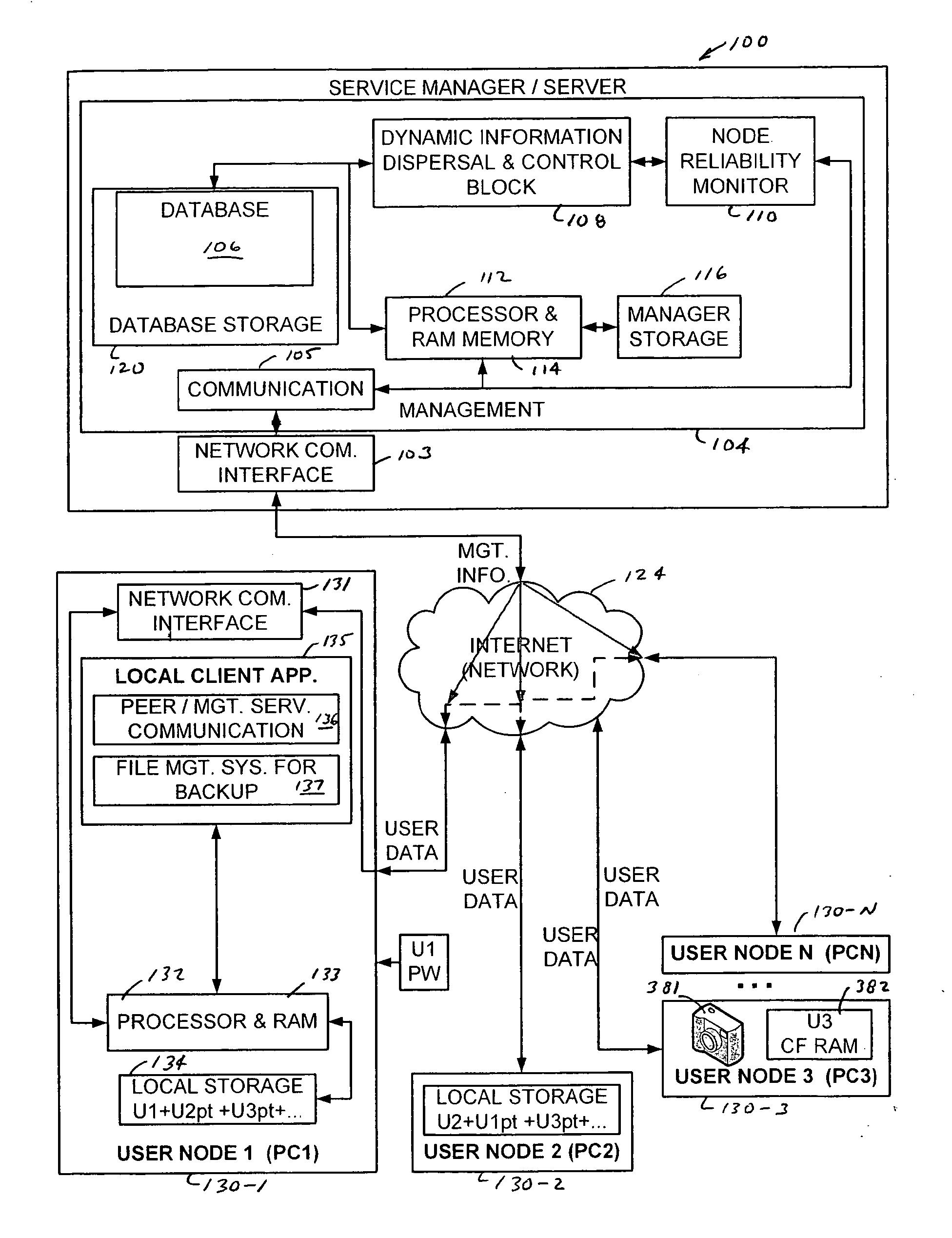Managed peer-to-peer content backup service system and method using dynamic content dispersal to plural storage nodes
a peer-to-peer content and storage node technology, applied in the field of distributed network based secure storage of consumer digital data or content, can solve the problems of loss of content or these assets, theft of computer or information appliance, fire, water or other natural disasters, and often reminded of their own potential vulnerability to loss, and achieve the effect of generating monetary revenues
- Summary
- Abstract
- Description
- Claims
- Application Information
AI Technical Summary
Benefits of technology
Problems solved by technology
Method used
Image
Examples
Embodiment Construction
[0029]Various aspects, features, and embodiments of the invention are now described relative to the figures.
[0030]Contemporary computers sold today usually include at least an 80 GB hard disk drive even for low-end notebook computers, and frequently 300 GB or more for mid-range desktop computers. Many users will not consume all of the hard disk drive space on their computer in normal use, especially for the higher capacity hard disk drives. Furthermore, additional internal hard disc drives, external hard disc drives, and various forms of network attached storage are increasingly available.
[0031]Therefore, although users may be generating more digital content than the couple of gigabytes of content that might routinely be provided by the free conventional online storage and backup providers, they may typically still have a lot of available computer or other information appliance based storage space in their home. This is evidenced by the fact that Apple, Microsoft, and others are beg...
PUM
 Login to View More
Login to View More Abstract
Description
Claims
Application Information
 Login to View More
Login to View More - R&D
- Intellectual Property
- Life Sciences
- Materials
- Tech Scout
- Unparalleled Data Quality
- Higher Quality Content
- 60% Fewer Hallucinations
Browse by: Latest US Patents, China's latest patents, Technical Efficacy Thesaurus, Application Domain, Technology Topic, Popular Technical Reports.
© 2025 PatSnap. All rights reserved.Legal|Privacy policy|Modern Slavery Act Transparency Statement|Sitemap|About US| Contact US: help@patsnap.com



